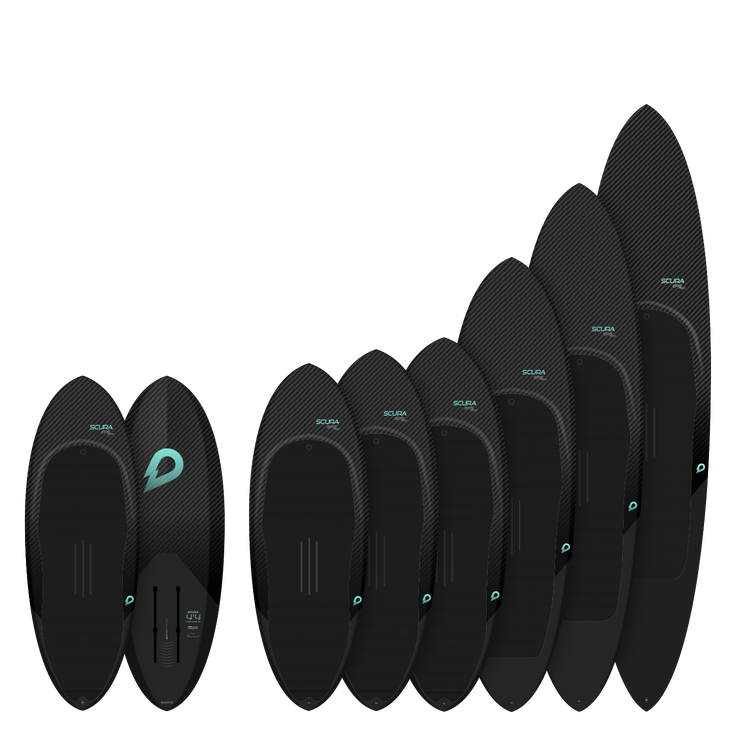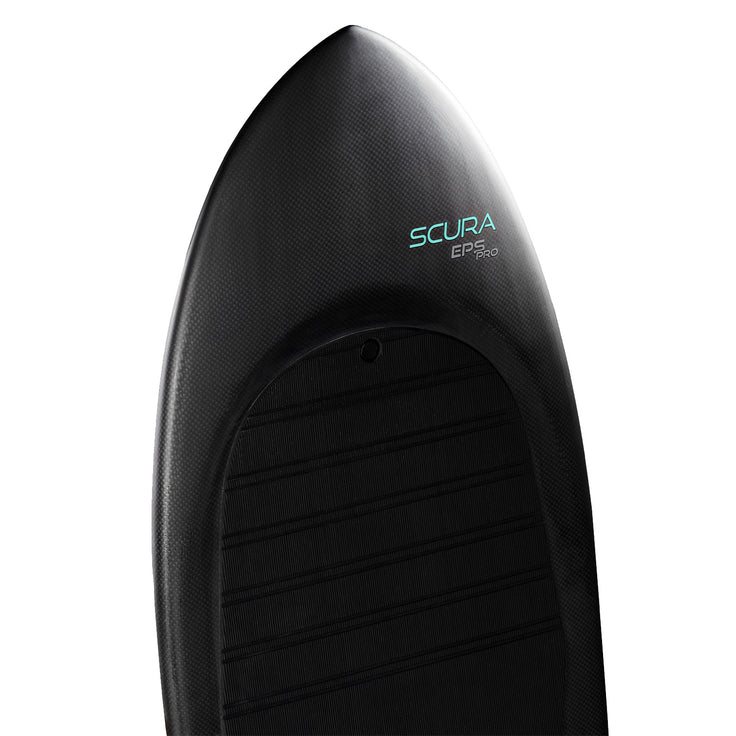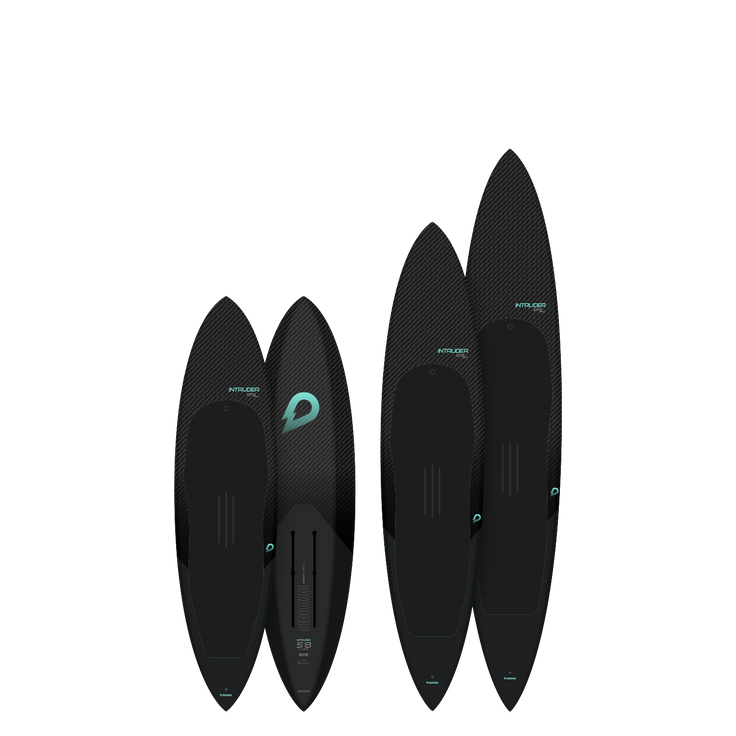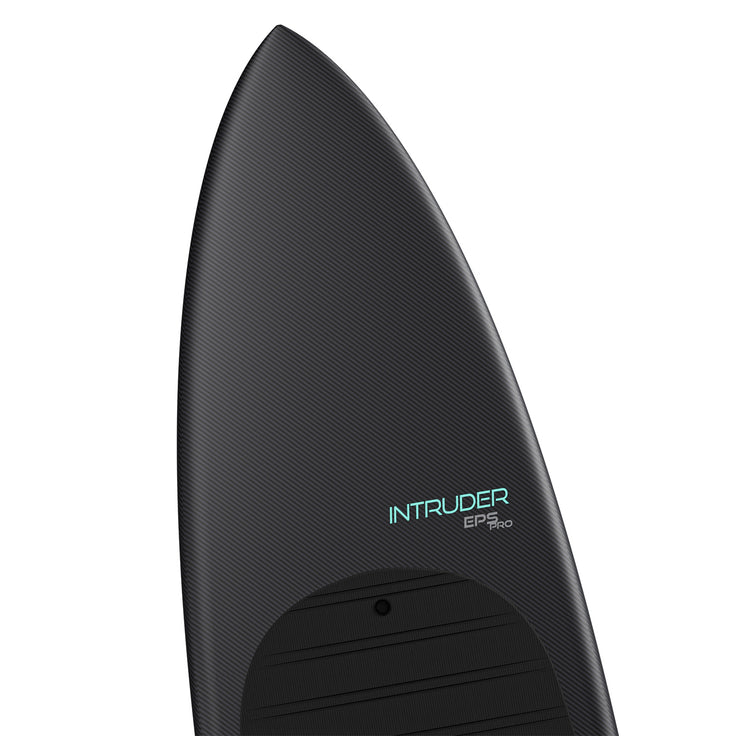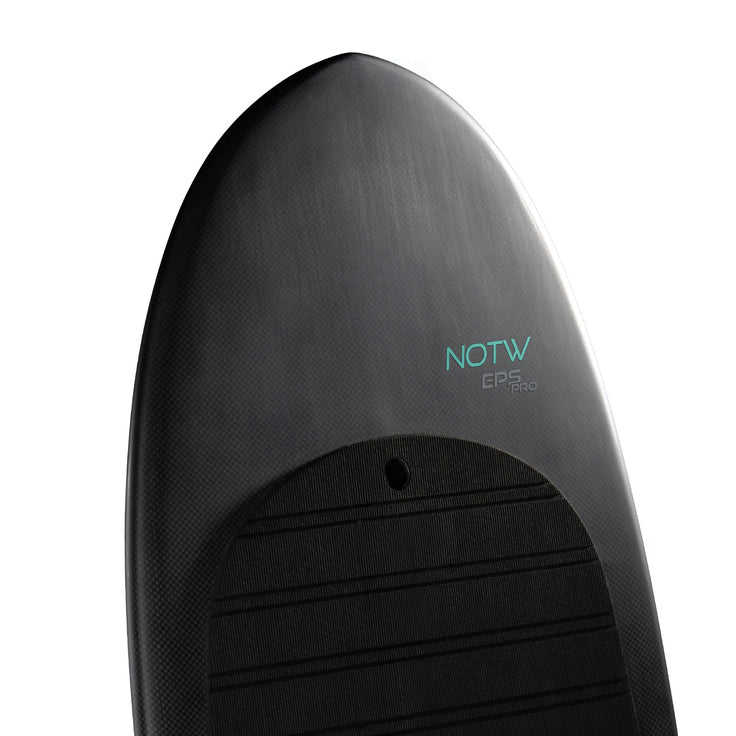INSIGHTS: DO YOU TAKE OFF EARLIER ON A SUP FOIL OR MID-LENGTH SURF FOIL BOARD?
Between a standing start or a prone start, here’s everything you need to know to make your choice.
It’s fascinating to compare a mid-length surf foil board with a SUP foil board for takeoffs in low-energy conditions. Here’s a breakdown of the benefits and characteristics of each option.

Surffoiler: Mathieu, GONG team rider, with a Scura EPS Pro and Veloce H setup.
Surf Foil Mid-Length: A paddling technique similar to surfing
Prone paddling start: Mid-length surf foil boards are built for efficient paddling, much like a competition prone paddleboard. They allow you to start in a prone position, feel the water, paddle to catch a wave, and then perform a take-off to stand up. This kind of board allows you to start long before the wave breaks, offering a significant advantage in spots with weak or poorly formed waves.
Length and volume: Mid-length boards generally measure between 7 and 8 feet, providing great glide in the water before takeoff while keeping the size compact. Their length helps capture small swells and barely formed waves. While the volume is less than that of a SUP foil board, it’s still enough to offer solid buoyancy, ensuring stability and speed during paddling and enabling early take-offs on waves.
Glide before flight: With their elongated and narrow shape, these boards offer excellent glide before takeoff. They let you ride the swell before it becomes too steep, which helps you avoid being too close to the shore or obstacles such as rocks or sandbanks. This makes it possible to explore typically tricky spots and/or take a more relaxed approach to surf foiling.
Rail-to-rail transition: Once in the air, the shape of mid-length surf foil boards, which is thinner than a SUP foil, makes them more maneuverable for smooth rail-to-rail transitions. This makes them highly responsive for carving, pumping, and seeking direct sensations while surfing.

Surffoiler: Mathieu, GONG team rider, with a Scura EPS Pro and Veloce H setup.
SUP foil: The flat start option
Flat Start: Unlike surf foil boards, a SUP foil board enables you to start even without waves, relying on the paddle and strong pumping technique. You can start facing away from the shore, which is truly amazing to think about and to achieve. A game changer! Starting early is essential on a SUP foil. With the added volume, typically 20 to 30 liters more than the rider’s weight (for example, a 70 kg rider would go for a board with 90 to 100 liters minimum), the board floats effortlessly. This lets you paddle and pump on the foil to take off, even on flat water.
Paddle use: The paddle is crucial in SUP foil. It helps generate the initial speed required to get the foil moving. With proper paddling and pumping technique, you can accelerate enough to take off without needing a wave. This is what makes SUP foil so efficient in conditions where waves are r are, soft, or absent.
Glide before flight: SUP foil downwind boards are long and slim, which provides fast glide before takeoff. They behave like a racing kayak or rowboat, creating high speeds on the water. This helps ease the transition into flight by providing enough initial lift to get the foil up.
Pumping and oscillation technique: Once you reach the speed needed for takeoff, slightly raise the board’s nose to angle the foil and begin pumping. Initially, the board will want to drop with each pump, but the volume under the nose and the kicktail will help you bounce off the water and regain height with each pump. This "bouncing" effect is crucial for sustaining flight.
Versatility in conditions: This ability to start on flat water with a paddle makes SUP foil the ideal tool for sessions in light or almost nonexistent conditions. You can catch small waves or bumps and link them, heading out to the next ones. Plus, you can train on flat water between sets.

SUP Foiler: Mathieu, GONG team rider, with an Intruder EPS Pro and Carbon Pro paddle.
Comparison of the advantages and limitations of each type of board
Efficiency in low conditions: SUP foil has a clear advantage for takeoffs on flat or poorly formed water, thanks to the paddle power and the oscillation allowed by standing. If the goal is to start in nearly flat conditions, this is clearly the best choice. The mid-length surf foil is still very efficient for prone starts, but it needs a wave, even a weak one, a bump, or some chop—anything with slope and energy to maintain speed from the paddling acceleration to the start of pumping/flight. Without that energy or incline, this moment can be critical.

SUP Foiler: Mathieu, GONG team rider, with an Intruder EPS Pro and Carbon Pro paddle.
Performance in flight: Mid-length surf foils are more agile and easier to maneuver once in the air. The glide and carving feel while flying is more pronounced with this type of board, offering better responsiveness in pumping and rail-to-rail transitions.
Hand freedom in flight: It's also quite enjoyable to feel free without a paddle while surf foiling. However, the paddle in SUP foil provides extra drive and leverage, which is beneficial for pushing moves and enhancing pumping endurance.
Comfort and accessibility: For a rider seeking takeoff comfort, the SUP foil, with its higher volume, provides better performance when starting. However, the mid-length surf foil may be more demanding to get up from a prone position, but it remains a comfortable option for inexperienced SUP riders, as waiting and paddling are easier.
Ideal spots and conditions: The mid-length surf foil is ideal for beaches with gentle slopes and slow waves. The SUP foil performs best in waves, on flat water, and during sessions where you want to catch every bump or swell, even far offshore. Initially designed for downwinds and long-distance crossings, it allows for riding almost every day in a vast range of conditions. Both options let you get away from breaking waves, other riders, and steer clear of hazardous areas like rocks or sandbanks.








